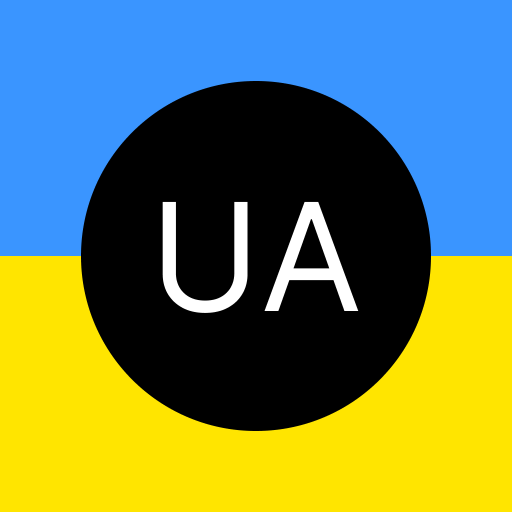Dangerous russian game in ZNPP is ongoing: why the 10th power cut will not be the last

Authors: Shaun Burnie, senior nuclear specialist, Greenpeace Ukraine and Jan Vande Putte, radiation and nuclear expert, Greenpeace Ukraine.
The Ukrainian Zaporizhzhya Nuclear Power Plant has resumed drawing power from the Ukrainian power grid after nearly a month without electricity. It would seem that we can breathe a sigh of relief, but no. Even though the Russians failed to fully carry out their criminal plans the ZNPP is still in danger. The main problem facing the plant — the Russian occupation — remains unresolved. Therefore, it is highly likely that new crises at the ZNPP are only a matter of time. Greenpeace Ukraine proved — the sabotage of the line on 23 September ordered by the Russian government was yet another an entirely manufactured crisis. At the same time the Kremlin's atomic disinformation is once again and inexcusably boosted by Rafael Grossi - aspiring Secretary-General of the United Nations. The International Atomic Energy Agency (IAEA) Director General was quick to claim that "Return of power (a) key step for nuclear safety". We are not fooled by Russian disinformation and Mr. Grossi's conflict of interest, and neither should Ukraine's allies — the only key step for ensuring nuclear safety is de-occupation by all Russian forces from the Ukrainian plant.
On 27 September, four days after the connection between the plant and the 750kV Dniprovska line was cut, Greenpeace Ukraine published analysis that Russia was implementing a plan to try and connect to the occupied Ukraine grid south and east of the ZNPP in Zaporizhzhia and Donetsk. The next next stage would be attempting to restart one of the shutdown reactors. This has been a Russian plan since at least 2022 - it failed then, and again in 2024, and now in autumn 2025. However, the fundamental threat to nuclear safety and security at ZNPP remains - the illegal occupation by Russian armed forces and the criminal Rosatom organization. No amount of sugar coating by Director General Grossi will change this reality and ensure nuclear safety.
On 1 October, Greenpeace Ukraine published satellite imagery reviewed by specialists at McKenzie Intelligence Services in London. This was imagery of the 750 kV Dniprovska transmission tower and line located 2km from the ZNPP and under Russian occupation. As we had suspected, the satellite imagery allowed the Mckenzie team to conclude that if there was damage, it was not the result of Ukraine shelling as there was no cratering or other evidence. Any repairs could be quickly and simply concluded. It was conclusive proof that Russian claims that the electricity line had been damaged by Ukraine military fire were false. Russian officials repeatedly issued false claims, including the Director of Rosatom Lighachev, that any repair was not possible due to continuing Ukraine attacks. But there were no Ukraine attacks and therefore the ceasefire by Ukraine was wholly unnecessary. At any time since 23 September Russian engineers could have repaired the line. The ceasefire as negotiated by Grossi was a half-truth. The other half being that a Russian ceasefire was absolutely essential to repair the other ZNPP electricity line, the 330 kV Ferosplavna-1line. This runs north from ZNPP across the Dnipro to Nikopol district and was severely damaged by Russian artillery and Grads fired from near the ZNPP. The 330 kV Ferosplavna-1 line has not been operable for five months and the ceasefire has finally allowed courageous Ukraine engineers to start repairs and not be under constant Russian attack.
So what just happened from 23th of September until 2 th of October at the ZNPP and why? Russia tried to reconnect the Zaporizhzhya Nuclear Power Plant to "itself" and carefully prepared for this crime from both a technical and diplomatic standpoint. But it failed.
The aim of Russia (still!) is to retain control of the ZNPP and to continue to use it as a strategic asset against Ukraine and Europe. As a radiological threat to exert influence, the plant has an enormous stockpile of highly radioactive nuclear fuel in the cores and in the spent fuel pools. Because all six nuclear reactors have been shut-down for more than three years there has been inevitable decay of the heat in the fuel and therefore the amount of cooling function required is much less than when the reactors were operating or just recently shut down. They still need cooling but a lot less. Knowing this earlier in 2025, Russians gambled that there was sufficient on-site emergency diesel generating capacity to operate over an extended period and capable of powering cooling water pumps and other safety systems. The power cut from September 23th was an emergency but planned. Russia no doubt judged that they had created enough of an emergency for Rosatom to subsequently attempt to justify to the IAEA the reconnection to the grid lines that run south of the plant in illegally occupied Zaporizhzhia, Kherson and Donetsk. The new grid line under construction between Melitopol and Mariupol which we highlighted in May and September is only one part of Russia's grid plans. For some reasons, which will appear in future history textbooks, their plan to connect to the Russian grid failed - this time. But the occupation of the Zaporizhzhia Nuclear Power Plant continues, and in order to prevent the entire civilized world from playing the Russian aggressor's nuclear games, we, the IAEA and the international community, must do everything possible to end the occupation.
Ukraine's allies need to wake up to the scale of the nuclear threat posed by the continued Russian occupation of the Zaporizhzhia nuclear plant. Unless things change, Russian forces will at some point repeat their efforts to connect to the occupied grid and attempt a reactor restart. The trajectory Russia is on to a nuclear disaster is unacceptable but preventable. It requires the strongest possible action by European governments, including the imposition of punitive and effective sanctions that ends all nuclear trade with the criminal state enterprise Rosatom. It also requires that the head of the IAEA stops pandering to the Russian government. The DG Grossi needs to act in the interests of real nuclear safety. He is required to fully comply with all relevant resolutions of the IAEA Board of Governors and General Conference member states which require that the ZNPP be returned to the sole legitimate Ukraine operator and regulator and the resolutions of the UN General Assembly which demand Ukraine's sovereignty and territorial integrity be respected. False flags, sabotage and disinformation are centuries old and standard operating procedure from Russian rulers in Moscow. The radioactive version of this dangerous propaganda cannot be tolerated coming from IAEA headquarters in Vienna.









